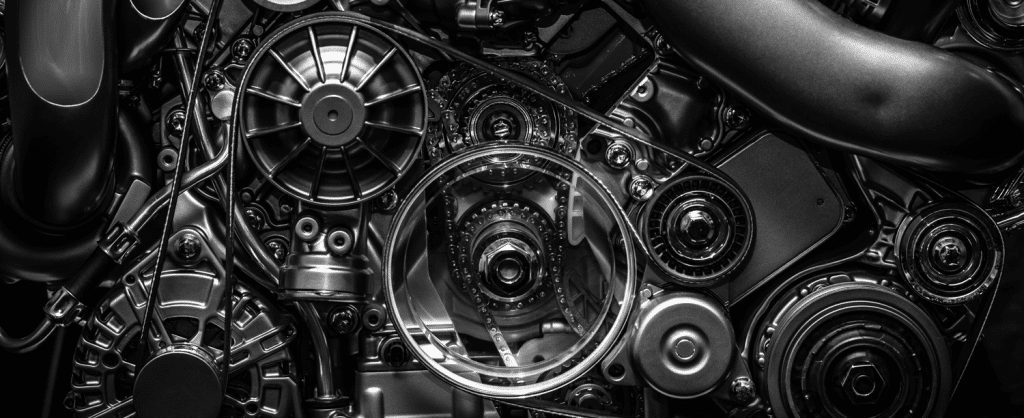
I'm a social scientist who helps people break out of the invisible traps and make whole-life changes easily and naturally.
What do top universities, international airlines, and the California DMV have in common? Answer: Terrible websites, with so much hierarchy in their navigation scheme that accomplishing a basic task requires a black belt in enterprise bureaucracy. Why do companies with so many resources at their disposal have such a hard time producing good design?
Simple, clean UX design is hard work. Sometimes you just have to lock yourself up for a week to figure out how to make the complex look simple. But getting design done in a huge enterprise – where stakeholders are spread across departments with decades of political history dividing their interests – is a total bitch.
Today, Dustin Curtis blogged about how American Airlines, one of the finest American brands, has just killed off its last remaining nugget of good design with their new logo. “After forty-six years, one of the finest corporate brands in history has been reduced to patriotic lipstick,” Dustin writes. “The design problems at American Airlines have never stemmed from its visual identity, but rather from its execution of that identity and from its culture around customer experience.”
1954: Henry Fonda and family about to leave NY for CA via American Airlines. Jane and Peter Fonda on the right. Proof that AA is a great big old company. Photo by © Bettmann/CORBIS.
Today’s wasn’t Dustin’s first critique of AA’s UX. In 2009 he published an awesome series on the organizational dynamics behind the tangled design so common in big old organizations. Here’s the blow by blow.
- Designer Dustin Curtis uses and decides he hates the AA.com website.
- So he sends them a stern critique and a homepage redesign mockup.
“I’m a user interface designer. I travel sometimes. Recently, I had the horrific displeasure of booking a flight on your website, aa.com. The experience was so bad that I vowed never to fly your airline again. But before we part ways, I have some questions and two suggestions for you.”
- Their UX architect (“Mr X”) sends a sympathetic and insightful reply about why it’s so hard for big organizations to produce great design.
“The problem with the design of AA.com, however, lies less in our competency (or lack thereof, as you pointed out in your post) and more with the culture and processes employed here at American Airlines.
“Let me explain. The group running AA.com consists of at least 200 people spread out amongst many different groups. However… our Interactive Marketing group designs and implements fare sales and specials (and doesn’t go through us
[the UX team] to do it), and the Publishing group pushes content without much interaction with us… Oh, and don’t forget the AAdvantage team (which for some reason, runs its own little corner of the site) or the international sites (which have a lot of autonomy in how their domains are run)… Anyway, I guess what I’m saying is that AA.com is a huge corporate undertaking with a lot of tentacles that reach into a lot of interests. It’s not small, by any means.
“…But—and I guess here’s the thing I most wanted to get across—simply doing a home page redesign is a piece of cake. You want a redesign? I’ve got six of them in my archives. It only takes a few hours to put together a really good-looking one, as you demonstrated in your post. But doing the design isn’t the hard part, and I think that’s what a lot of outsiders don’t really get, probably because many of them actually do belong to small, just-get-it-done organizations.”
- In response, designer revises his critique, learns a few things, and talks a lot about the importance of good taste and how the CEO of AA sucks. (I don’t care to comment on either point…. the most useful content was the reply from the designer at AA, in my opinion.) See afterword below for what’s happened since.
Good design is about so much more than taste. Getting design done is an organizational behavior challenge. It requires negotiation, communication, empathy for different stakeholders, problem framing and reframing, coalition building, cross-functional teamwork. It requires product leaders who can drive design strategies up, down, and across the organization.
All of this org-effort takes time, so design change has to be that much more thoughtful, intentional, and sustainable. Experiments are great when the worst thing that can break is a web search or two. But when an experiment breaks a customer’s airline reservation or banking transaction, error becomes a much bigger concern.
The letter from AA’s designer (“Mr. X”) reveals the tip of the iceberg of why big, heavily regulated, high stakes, old school organizations have crap websites. But that doesn’t mean that good UX is any less important to converting visitors into customers, or keeping customers happy and engaged.
UX is not a luxury that most businesses can afford to ignore in today’s marketplace. If your customers are frustrated with your website but still making purchases, it won’t be long before a new competitor comes along to do it better. And that new entrant will be built from the ground-up with a culture and structure designed to produce great design. (Remember how Southwest Airlines, the once barebones, regional airline, disrupted the entire industry [in part] by making the ticketing UX simple and transparent?) Or maybe your customers will find a happier home online with a third-party substitute like Kayak.com that lets them sidestep your entire UX. Sooner or later, if you want to keep your customers, UX becomes a competitive imperative.
So how can big old companies compete? To compete in the new design-driven era, big old companies need to redesign themselves into Great Design Organizations. They need to rework their cultures. They need to understand their employees as “users” of the the organization, trying to get their jobs done. What are their needs? What are their goals? What usability obstacles do they encounter? What bugs are in the system?
Organizations also need to empower their designers to work up, down, and across the organization. Most designers haven’t been trained to do this, and many don’t want to do it. (Probably, most production designers shouldn’t have to – this is probably best done by a design-driven product manager.) But what a great world it would be if our best designers could have massive impact in the big organizations that we all touch every day! If our crappiest, most fundamental business of daily life bureaucracies could start delivering refreshing, simple user experiences!
So designers, if you want to make major waves in the world, take an OB course.Take a negotiations course. Practice asking for what you need, and framing your ideas as win-wins. As Timoni West points out, your job is to communicate. Treat your big horrible organization as one of your user bases – understand how to make it move the way you want it to by putting the right behavioral triggers in the right order. Be a master not just of pixels but people, not just of product architecture but organizational architecture.
Getting great design done is an organizational behavior challenge, and organizational behavior is a major design challenge. If we can remember this, maybe we can start making some slow, deep waves in the big, old organizations that – like it or not – touch all of our lives.
xo,

